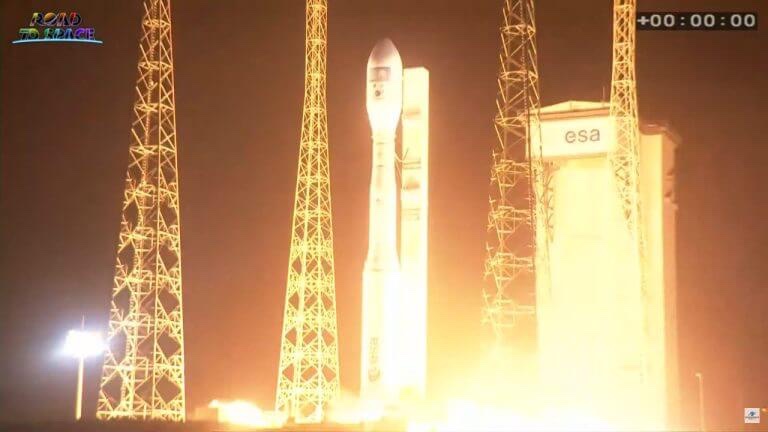
Arianespace:Vega C 發射失敗!
ーFlight VV22 – Airbus・Pleiades Neo 5 & 6ー
2022 年 12 月 21 日
法屬圭亞那
圭亞那航天中心
阿里安空間:
– 發射“Vega C”火箭和“VV22”任務 –
發射火箭後,Vega C 二級發生故障,發射失敗。
織女星 C:
阿麗亞娜航天公司開發的新型火箭。
“VV21”:
“VV21”任務於2022年7月13日首次發射成功。
“VV22”:
這次VV22是第二次發射。 然而,發射失敗了。
地球觀測衛星
昴星團
空中客車公司研製的地球觀測衛星“Pleiades Neo”兩架飛機安裝。
sorae 門戶網站到宇宙
https://sorae.info/space/20221221-vegac-vv22-failure.html
Arianespace : le lancement de Vega C a échoué !
ーVol VV22 – Airbus・Pléiades Neo 5 & 6ー
21 décembre 2022
Guyane Française
Centre Spatial Guyanais
Espace arien :
– Lancement de la fusée « Vega C » et de la mission « VV22 » –
Après le lancement de la fusée, le 2e étage Vega C a mal fonctionné et le lancement a échoué.
Véga C :
Une nouvelle fusée développée par Arianespace.
“VV21”:
La mission « VV21 » a été lancée avec succès pour la première fois le 13 juillet 2022.
“VV22”:
Ce VV22 est le deuxième lancement. Cependant, le lancement a échoué.
satellite d’observation de la terre
Pléiades Néo
Deux avions du satellite d’observation de la terre « Pleiades Neo » développé par Airbus ont été installés.
site portail sorae vers l’univers
Arianespace: Start von Vega C fehlgeschlagen!
ーFlug VV22 – Airbus・Pleiades Neo 5 & 6ー
21. Dezember 2022
Französisch-Guayana
Raumfahrtzentrum Guayana
Arianischer Raum:
– Start der „Vega C“-Rakete und „VV22“-Mission –
Nach dem Start der Rakete funktionierte die zweite Stufe der Vega C nicht richtig und der Start schlug fehl.
Weg C:
Eine neue Rakete, die von Arianespace entwickelt wurde.
“VV21”:
Am 13. Juli 2022 wurde die Mission „VV21“ erstmals erfolgreich gestartet.
“VV22”:
Diese VV22 ist die zweite Produkteinführung. Der Start schlug jedoch fehl.
Erdbeobachtungssatellit
Plejaden Neo
Installiert wurden zwei Flugzeuge des von Airbus entwickelten Erdbeobachtungssatelliten „Pleiades Neo“.
sorae-Portalseite zum Universum
Two Pléiades Neo Earth-imaging satellites lost in failure of Europe’s Vega C rocket
The final two spacecraft in Airbus’s four-satellite, 600 million-euro commercial Pléiades Neo Earth observation fleet
crashed into the Atlantic Ocean shortly after launch from French Guiana Tuesday night, falling victim to a failure of a European Vega C rocket.
The Vega C rocket’s launch operator, Arianespace,
confirmed the mission failed to place the two Pléiades Neo optical imaging satellites into orbit.
The preliminary focus of the failure investigation centered on the Vega C rocket’s second stage.
The 114-foot-tall (34.8-meter) rocket lifted off from the Guiana Space Center at 8:47:31 p.m. EST Tuesday (0147:31 GMT Wednesday)
with the Pléiades Neo 5 and 6 Earth-imaging satellites for Airbus Defense and Space.
The target was a polar sun-synchronous orbit.
The Vega C’s powerful solid-fueled P120C first stage booster
burned nearly two-and-a-half minutes, producing a million pounds of thrust to accelerate the rocket into the upper atmosphere.
Heading north from the South American coastline, the rocket shed its spent first stage motor casing and fired a second stage Zefiro 40 motor to continue the climb into space.
– Spaceflight Now